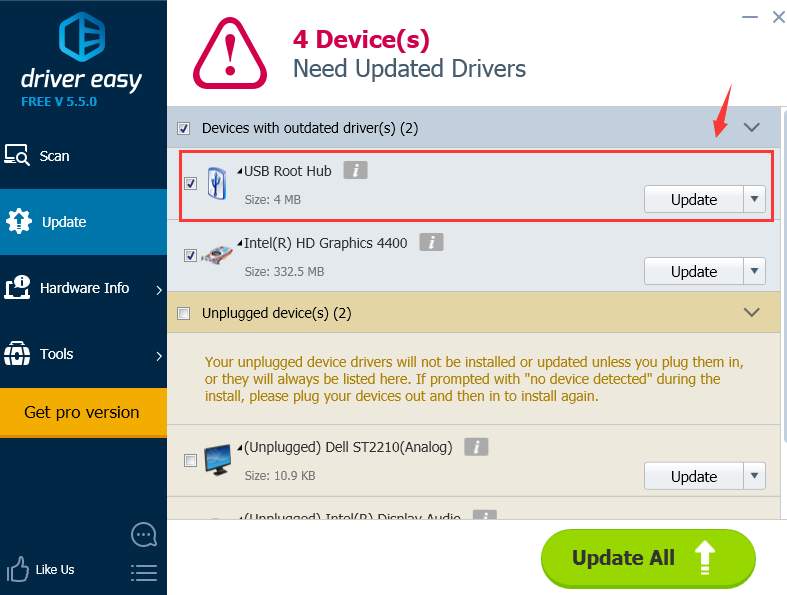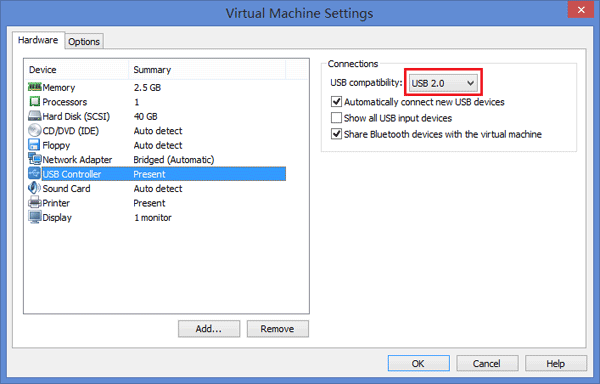As of VMWare ESX/ESXi/vSphere version 4.1 and above, you can now pass through USB devices to the guest virtual machine, as though it was directly connected to that machine. This is great for passing through USB HDD’s, USB tape drives, printers, etc. The following steps outline how to set up ESXi to pass through a USB device to a virtual machine. VMware even allows passthrough USB devices to be vMotioned to a different host and remotely access the USB device on the host presenting the device to the VM. USB passthrough certainly has some limitations to be noted such as the inability to boot and various hardware requirements that must be met. Connect the USB device to your local client system. From the VMware Horizon Client menu bar, click Connect USB Device. Select the USB device. The device is manually redirected from the local system to the remote desktop.
To use VMware Workstation 4 on a Windows 2000 host that has USB 2.0 ports, you must use the Microsoft USB 2.0 drivers for the USB controller in the host operating system. If your host operating system is using a third-party driver — a driver supplied by your motherboard vendor, for example — you must replace it. Open the Device Manager on the guest, expand Universal Serial Bus controllers, and reinstall the VMware View Virtual USB Host Controller and VMware View Virtual USB Hub drivers if these drivers are missing or re-enable them if they are disabled.
As of VMWare ESX/ESXi/vSphere version 4.1 and above, you can now pass through USB devices to the guest virtual machine, as though it was directly connected to that machine. This is great for passing through USB HDD’s, USB tape drives, printers, etc.
The following steps outline how to set up ESXi to pass through a USB device to a virtual machine.
This is a two stage process the first time you set this up. You need to add a USB controller to the virtual machine before you can add USB devices. After this initial setup, you can just add more USB devices as needed.
Start by loading up the vSphere client, and connect to your VMWare ESX/ESXi/vSphere server.
Find the virtual machine that you want to configure USB pass-through on, right click it, and select “Edit Settings”.
You should now see the virtual machine properties window, as shown in the screenshot below.
Click the “Add” button at the top.
Select “USB Controller” and hit “Next”.
Select “EHCI+UHCI” if you only need USB 2.0 or 1.1 support, or if your operating system doesnt support the USB3 controller.
Select “xHCI” from the drop down list to allow USB 3.0, 2.0 and 1.1 support.
I will be using xHCI for this example.
Hit “Next” after selecting the controller type.
Verify the selection configuration, and hit “Finish”.
Now you have a USB controller added to the virtual machine, you can go ahead and actually add the physical USB device to the virtual machine.
Make sure your USB device is plugged in now, before proceeding.
Press “Add” again on the virtual machine properties screen.
This time you will need to select “”USB Device”.
Press the “Next” button.
Select your USB device to add to the virtual machine.
In this example, I have a Samsung external USB HDD plugged in.
Hit the “Next” button.
Confirm your configuration options, and hit the “Finish” button.
You will now have a USB controller, and a USB device added to the virtual machine.
Press the “OK” button to save, and apply the changes.
When you boot up the virtual machine, you should now have access to the USB device just like it had been plugged directly into that virtual machine.
Vmware Usb Devices Drivers

Enable SSH on VMWare ESXi 5 (vSphere 5)
February 16, 2012
Vmware Usb Pointing Device Driver

Vmware Usb Device Driver Error
Enable SSH Access on VMware ESXi 4 (vSphere)
January 5, 2012

Comments are closed.